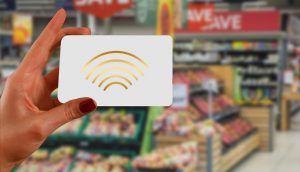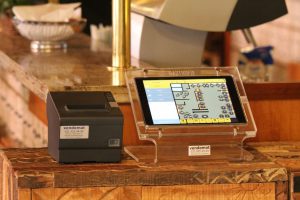Price Automation in Smart Grocery Stores
Franziska Plate and Dominik Schneider
Description
Keywords: price automation; smart city; IoT; digitalization; smart grocery store
H2020 challenge: Europe in a changing world – inclusive, innovative and reflective societies
Knowledge and skills (P: prerequisite; D: desirable, but not necessary): State-of-the-art technologies, e.g. network trends like “5G” as well as IT trends like “(Narrowband-)Internet of Things”, “Blockchain” (P), Connectivity technologies (P), Connected use cases (high level architecture, hardware, high level protocols) (D), Automation and optimization possibilities enabled by Business Intelligence and Data Analytics (keyword: Big Data) (D), Industry insights and market needs of “grocery stores” (P), Digitalization and connected things know-how (D), Entrepreneurship and foundation of start-ups (P), Marketing and distribution concepts (D), People, resource and change management (D), Legal boundaries and regulations (e.g. forbidden price agreements between companies, …) (D), Research and analytical skills (P), Economic skills for the identification of value streams, creation of business models and development of business cases (D), Conceptual thinking and ability to transfer business requirements into technical implementation details (P), Commitment, determination and ability to work in a team (P), Independent and conscientious work in distributed teams (P), Creativity and innovative thinking (D), Visualization and presentation skills (P)
You are an Entrepreneur and you believe in the idea of price automation within grocery stores. By
introducing your solution, grocery stores can adapt their prices all-automatic via a network
connection (e.g. NB-IoT or 5G). Utilizing connected electronic shelf labels and a pricing automation
Artificial Intelligence (AI), the solution enables retailers to change their prices based on
competition, special events and promotions, etc. Retailers can save time by implementing your
solution and can reduce staff expenses. Customers will experience more appealing prices instantly
and in real-time. In addition, prices can be automatically adjusted to the time of day in order to
offer discounts on good with an expiry date such as vegetables or meat to avoid wasting the
goods. Furthermore, the idea of a price automation can be adopted with other technologies like
Virtual Reality to make the shopping experience more easy and attractive.
In this case study students can elaborate…
– an assessment/evaluation of suitable technologies
– direct and indirect business models
– the end to end value chain and essential stakeholders/partners
– a detailed business case
– a market analysis
– a distribution concept
– societal topics regarding Price Automation
– other technical, business and societal topics.
Questions that need answers
- Which technology do you see as the most relevant/fitting solution for the price automation use case? (NB-IoT, GPS, Bluetooth, UMTS, LTE, Wi-Fi, …)
- Based on which criteria do you select the fitting technology? (strengths, weaknesses, opportunities, threats, costs)
- Which external factors influence the implementation of the technology? (country, politics, regulation, …)
- Which data security and privacy issues should be considered?
-
- In which aspects does a Price Automation solution support a retailer?
- Costumer experiences, rate of wasting goods, unique selling points, …
- Which costs and which financial and qualitative benefits arise from the use of a Price Automation solution? Which benefits can be achieved on behalf of the customer?
- Should a retailer consider an “as a service”-approach or buy and run a solution by himself?
- Will you provide the whole solution or only some components for the solution?
- Which are the most relevant partners/stakeholders to realize the use case and what are their requests towards your enterprise? How does the end to end value chain look like?
- Create a Business Model Canvas for the price automation business model (as is) and compare it to a Business Model Canvas which has implemented a Price Automation solution (to be).
- In which aspects does a Price Automation solution support a retailer?
-
- How do the work conditions change for a retailer and his employees? Which are the positive and which are the negative changes?
- Does a Price Automation solution create or cost jobs? How do job profiles change within the retail sector?
- Is there a necessity for politics to either foster or decelerate a Price Automation solution? How should political measures look like?
- What could be the impact on the business case if customers feel uncomfortable with digital changing electronic shelf labels? Is there an impact on consumer behaviour? (acceptance of solution?)
- How can customer protection law pose a threat to your business case?
Entrepreneurial Case Expert

Franziska Plate
TeamSoc21 Entrepreneurial Case Expert

Dominik Schneider
TeamSoc21 Entrepreneurial Case Expert

Niklas Kirfel
TeamSoc21 Entrepreneurial Case Expert
Case study students (Group 1)

Anna Gonter
TeamSoc21 Valencia2019 Student

Emmanuel Boakye-Gyau
TeamSoc21 Valencia2019 Student

Hrvoje Tonkovac
TeamSoc21 Valencia2019 Student

Javier Andani Cerda
TeamSoc21 Valencia2019 Student
Case study students (Group 2)

Cristina Avellan
TeamSoc21 Valencia2019 Student

Francisco Sanchez Noguera
TeamSoc21 valencia2019 Student


